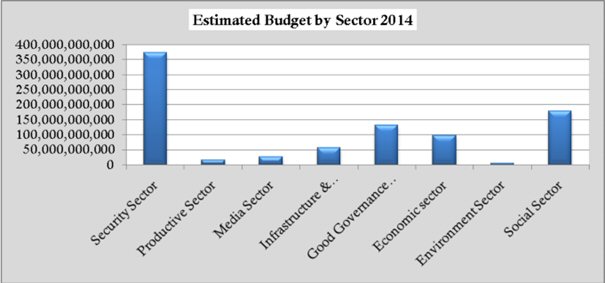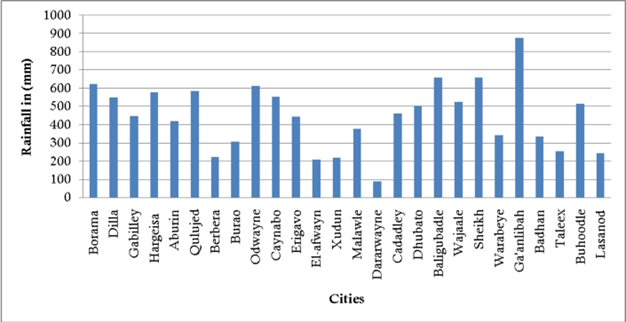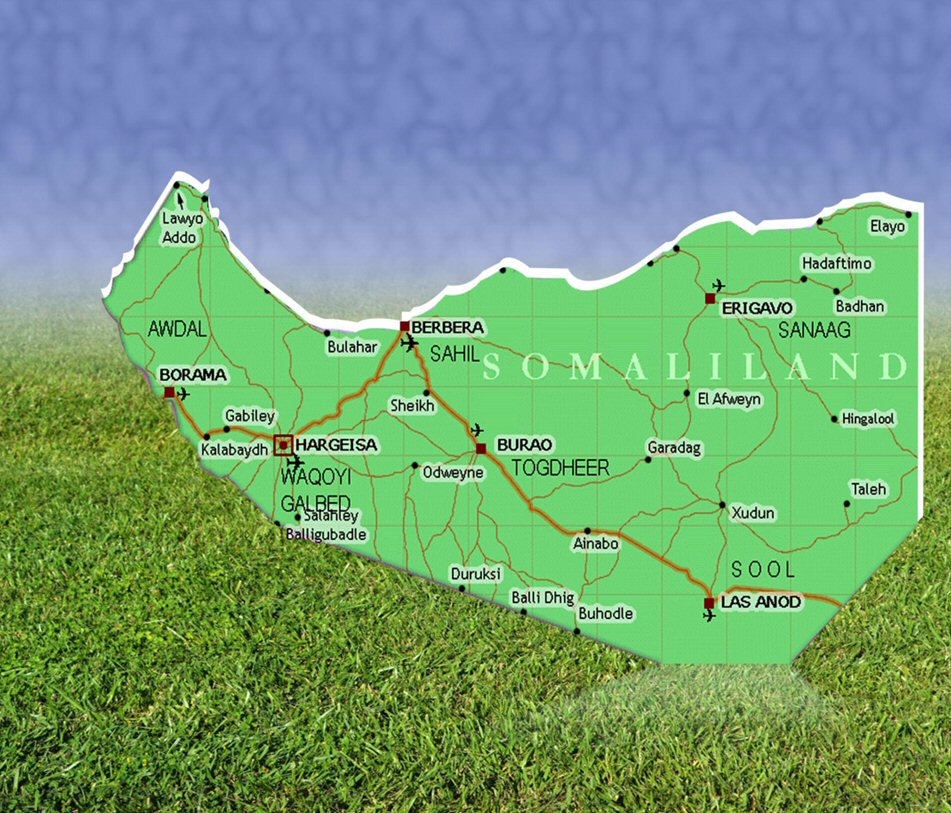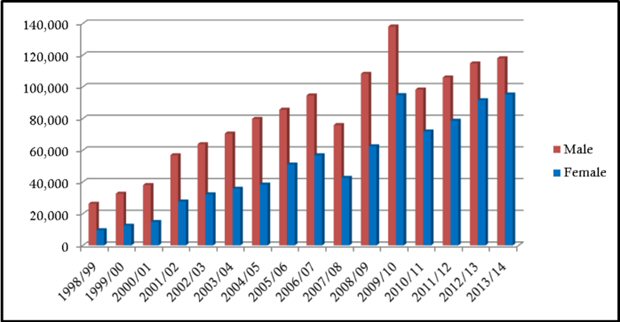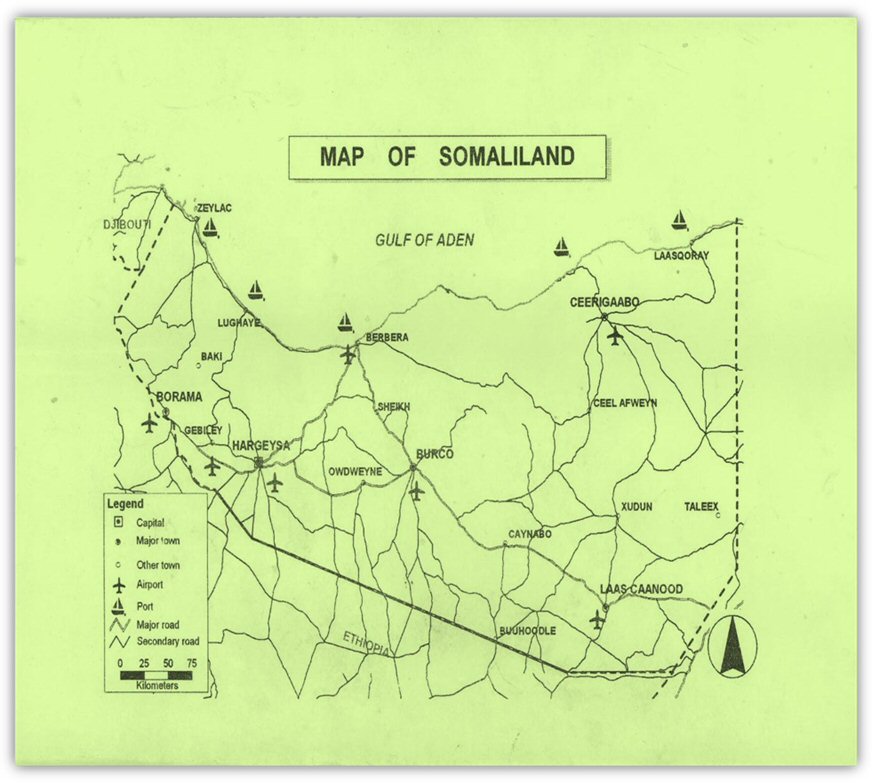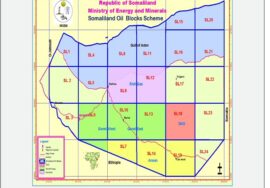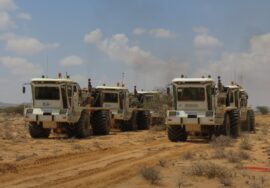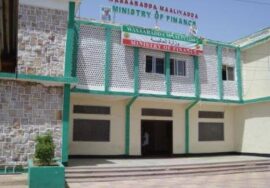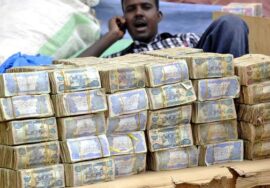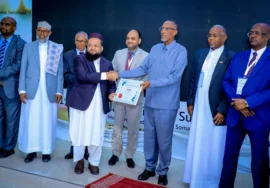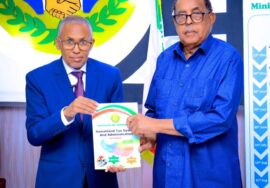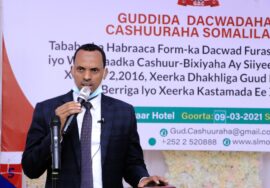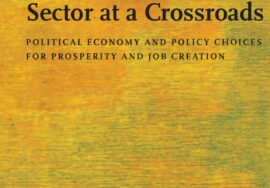Somaliland in Figures
Somaliland in Figures
1. INTRODUCTION
The former British Somaliland Protectorate achieved full independence from the United Kingdom on 26 June, 1960. On 1 July, 1960, the state of Somaliland united with Somalia, a territory under a U.N. mandated Italian Trusteeship until that same day, thereby creating the Somali Republic.
The Republic of Somaliland restored its independence after the total collapse of Somalia on 18 May 1991 as a result of the civil war of the late eighties and early nineties. The decision was made by the Congress of Council of Clan Elders held in Burao from 27 April to 15 May, 1991. Constitutionally, the Republic of Somaliland is a democratic country with a multi-party system.
The decision to reclaim independence in 1991 was confirmed by national referendum for the constitution which and bodies the sanity of the sovereignty of Somaliland on which was approved by 97% of the votes. Since then Somaliland held two local municipal elections (2002 and 2012), a parliamentary election (2005) and two presidential elections (2003 and 2010).
2. GEOGRAPHY AND CLIMATE
2.1. LOCATION
The Republic of Somaliland is situated in the Horn of Africa. Its boundaries are defined by the Gulf of Aden in the north, Somalia in the east, the Federal Republic of Ethiopia in the south-west, and the Republic of Djibouti in the north-west. It lies between Latitudes 8o and 11o27’ North and Longitudes 42o35’ and 49o East; it has mountain ranges rising up to six and seven thousand feet in the centre and in the east of the country respectively.
2.2. AREA
The total area of the Republic of Somaliland is 137, 600sqkms, and it has a coastline which is 850kms long.
2.3. CLIMATE
Somaliland is located north of the Equator. It is semi-arid. The average daily temperatures range from
25oC to 35oC. The sun passes vertically overhead twice a year, on 22 March and 23 September.
Somaliland consists of three main topographic zones:
(1). A Coastal Plain (Guban) (2) The Coastal Range (Oogo) (3) A Plateau (Hawd)
The Coastal Plain (Guban) is a zone with high temperatures and low rainfall. Summer temperatures in the region easily average over 100”F. However, temperatures come down during the winter, and both
human and livestock populations increase dramatically in the region.
The Coastal Range (Ogo) is a high plateau to the immediate south of Guban. Its elevation ranges from 6000ft above sea level in the west to 7000ft in the East. Rainfall is heavier there than in Guban, although it varies considerably within the zone.
The Plateau (Hawd) region lies to the south of Ogo range. It is generally more heavily populated during the wet season, when surface water is available. It is also an important area for grazing.
2.4. RAINFALL
Somalilanders recognise four seasons in the year; GU and Hagaa comprise spring and summer in that order, and Dayr and Jiilaal correspond to autumn and winter respectively. The average annual rainfall is 446mm in some parts of country according to availability of rain gauge, and most of it comes during Gu and Dayr. GU, which is the first, or major, rainy season (late March, April, May, and early June), experiences the heaviest rainfall in Ogo range and Hawd. This constitutes the period of fresh grazing and abundant surface water. It is also the breeding season for livestock. Hagaa (from late June through August) is usually dry although there are often some scattered showers in the Ogo range, these are known as Karan rains. Hagaa tends to be hot and windy in most parts of the country. Deyr (September, October, and early November), which roughly corresponds to autumn, is the second, or minor, wet season; as the word “minor” suggests, the amount of precipitation is generally less than that of Gu. Jilaal, or winter, falls in the coolest and driest months of the year (from late November to early March). It is a season of thirst. Hawd receive virtually no rainfall in winter. The rainfall in the Guban zone, known as “Hays”, comes between January and March or from December to January.
2.5. HUMIDITY
The humidity of the country varies from 63% in the dry season to 82% in the wet season.
3. ADMINISTRATIVE SUB-DIVISIONS
3.1. STATE
The administrative structure of the state consists of three branches: the judiciary, legislative (the House
of Elders and the House of Representatives), and the executive (the President and his chosen Council of Ministers). The ministers may not be appointed from Members of Parliament.
3.2. REGIONS AND DISTRICTS
The country is divided into fourteen regions, namely, Awdal, Maroodi-jeeh, Saahil, Togdheer, Sanaag,
Sool, Gabilay, Salal, Oodweine, Saraar, Buhoodle, Hawd, Badhan and Xaysimo. These are sub-divided into 86 districts.
3.3. CAPITAL
The capital of the Republic of Somaliland is Hargeisa. The estimated population of the city is nearly around 500,000 up to 600,000.
3.4. OTHER PRINCIPAL TOWNS
Other towns are Borama, Berbera, Burao, Erigavo, and Las Anod.
3.5. PORTS
The principal port town of Somaliland is Berbera.
4. POPULATION
The population of Somaliland was estimated at 3.5 million in 2014. The population consists of nomads (33.8%), urban (52.9%), IDPs (2.4%) and rural dwellers (11%).
NB: A recent real scientific based population estimation survey has shown the actual gross rate
4.1 VITAL STATISTICS
The annual population growth rate is 2.7%. Life expectancy at birth is 51.8
4.2 POPULATION DENSITY
The population density in the Republic of Somaliland has been estimated at 25 persons per square km in 2014
4.3 RELIGION
Somaliland is an Islamic State, and Somalilanders are Muslims. The influence of Islam throughout
Somaliland is profound, and faith plays a major role in everyday life.
4.4 LANGUAGES
The official language of the country is Somali. Arabic and English are also used widely, though mostly in
written form.
4.5 CURRENCY
The official currency of the Republic of Somaliland is the Somaliland Shilling. The shilling is divided into
100 cents. Currency notes come in denominations of 5000, 1000, 500, 100, 50, 20, 10, and 5 shillings.
6. Economy Sector
The backbone and the source of wealth of Somaliland’s economy is livestock. About 65% of the population depends either directly or indirectly on livestock and livestock products for their livelihood. Crop husbandry provides subsistence for about 20% of the country’s population. Foreign aid and remittances from the Somaliland Diaspora also play a major role in the economy of the country
6.1 GDP COMPILATION IN SOMALILAND
A preliminary estimate of GDP 2012 was finalised in January 2014 and presented to the Somaliland Economic Conference on Growth and Unemployment, Poverty and Inflation and
Budget Policy (29 January 2014). That estimate was updated in May 2014, but was still based on preliminary population estimates. The PESS was finalised in September and provides more
accurate estimates of the population. A proper estimate of the population is essential for the analysis of Somaliland Household Survey and its use in the GDP-estimates. This is version 3 of the GDP-estimate for 2012. It brings the estimates forward to 2013 and
beyond. The same sources and methods can be applied to compile estimates for 2010 and 2011 as well. The intention is to keep the document updated as the methods are being developed
and modified. The data sources are scarce and the estimates are to a large extent based on assumptions and inferences from other countries in the region. The assumptions have been made explicit, discussed and validated. The estimates have been organised as follows:
The GDP estimates have been derived by the production approach (GDP by activity) as well
as by the expenditure approach.
Three surveys have been crucial for the estimates of GDP: the Somaliland Business Survey (SBS); the Somaliland Household Survey (SHS); and the Population Estimation Somaliland
Survey (PESS).
A basic understanding of GDP is important; therefore, a summary of concepts and definitions regarding GDP is provided in below tables
GDP is basically derived by the production approach with a benchmark estimate for 2012; this will be the base year for the estimates at constant prices. Three items on the expenditure side are based on reasonable data sources: household consumption, government consumption and exports while, on the other hand, gross fixed capital formation is a guesstimate at best and imports are derived as a residual.
A simple supply and use table (SUT) has been compiled for 2012. It is meant to make the production and expenditure sides consistent. It is true that a SUT requires a wealth of detailed data that are not yet available in Somaliland.
6.2 BANKING
One of the provisions of the National Constitution of the Republic Of Somaliland is the establishment of a bank to carry out Central Bank functions. The Bank of Somaliland was inaugurated in 1994 with appropriate bank laws to ensure that banking regulations are fully in place. The Bank of Somaliland also operates as a commercial bank and has eight branches throughout the country.
6.3. LIVESTOCK
The contribution of livestock to the national economy is estimated at close to 28%. Thus, a large share of Somaliland’s people relies mainly on the products and by-products of their livelihood.
6.4 AGRICULTURE
Somaliland has a total area of about 137,600sqkms. Land under cultivation is currently estimated at 3% of the total geographical area. Another 7% has potential for agricultural development. The rainfall, soil (fertility and depth), and topography are the main determinants of these estimates.
6.4.1. RAIN-FED FARMING AND IRRIGATION
Rain-fed farming is the main agricultural production system. The main crops grown are cereals. Sorghum is the principal crop, utilizing approximately 70% of the rain-fed agricultural land. Another 25% of the land is used for maize. Other crops such as cowpeas, millet, groundnuts, beans, and barley are also grown in scattered marginal lands. Irrigation farms are mainly situated along the banks of streams (togs) and other water sources close to the riverbanks. Channelling from the source to the farm is mainly done by diversion of perennial water
(springs) to the farm through rudimentary earth canals or floods. The cultivable area of these farms is subject to floods and is, therefore, in danger of being washed away. Most of the irrigated farms have in them areas set aside for the cultivation of vegetables and fruits for commercial purposes.
6.4.2. MARKETING OF AGRICULTURAL PRODUCE
Farmers sell their products at the local market. Where possible, farm produce is transported to the markets in the urban centres by way of light transport trucks or donkey carts. Small retailers who are supplied directly by the producers or wholesalers sell the produce. There are also middlemen who operate between wholesalers and retailers.
6.4.3. CEREAL HARVEST IN 2010-2014
Harvest in Somaliland normally occurs three times a year. The 2014 Gu/Karan result was only two harvests (sorghum in Gu and maize in Karan). The total cereal harvest area of Somaliland has been estimated at ha 48200 with a total cereal production of 54,207 of tons (80.7% sorghum and 19.3% maize) according to the Ministry of Agriculture.
6.5
FISHERIES
The warm water of the Gulf of Aden borders the country of Somaliland along a coastline spanning 850kms on its southern fringes. This coastline extends from Lowya-Addo in the west to Elayo in the east and is characterized by sandy beaches broken at intervals by rocky cliffs that often penetrate into the shallow waters. The continental shelf is relatively narrow, rarely exceeding 15kms, except in the west near the Djibouti border, where it averages 100kms. Artisan fishermen harvest various tropical fish. They include tuna, snappers, groupers, grunts, trevally, emperors, barracudas, goatfish, parrotfish Spanish mackerels, sea breams, horse mackerels, and mulleys. Other marine organisms caught occasionally by local fishermen include sea cucumbers, shrimp, lobsters, and edible crabs. Production of fish in Somaliland is still very low (it’s less than 10% of the pre-war level and constitutes less than 2% of the Gross National Product [GNP]). According to various reports published by international organisations, fisheries in Somaliland remain untapped. FAO estimates this abundance of fish in the national waters at 200,000 tons and maintains that a maximum sustainable yield of 40,000 tons could be harvested without endangering the stocks. At the present time, estimated fish production is quite low compared to the potential. The shark fishing industry is the mainstay of the artisan fishing community in Somaliland, and more than 90% of the fishing fleet hunts for sharks for their valuable fins. In addition to these, a sizeable yield of sea cucumbers reaching several tons per year is harvested in the waters of Zeila and nearby islands. Furthermore, edible crabs and shrimp are caught in the Zeila and Togoshi areas. Local fishermen market around 30-50Kgs of live, edible crabs daily to Djibouti on foot.
6.5.1. ARTISANAL FISHING
Artisanal fishermen conduct most fishing activity in Somaliland. There are around 15 fishing communities composed of active fishermen and their dependents. Berbera serves as a focal point for the fishing industry in Somaliland. Fish caught at Berbera range from 1000 to 2000kgs and are transported immediately to Hargeisa or to Burao for local consumption. The current fishing fleet consists of 425 motor boats and 109 canoes; four hundred twenty eight of these vessels are operational.
6.5.2. INDUSTRIAL FISHING
Presently, no industrial fishing is undertaken by foreign vessels. Somaliland does not have deep sea Fishing vessels.
6.5.3. FISH CANNERY
The country has one fish cannery at Las-Qorey in Sanaag region; it was built in 2002 by a group of local businessmen who installed a new canning machine. Production started in 2002 at a capacity of 1-2.5 tonnes per a day. But unfortunately, it was closed down March 2010.
6.5.4. MARKETING
Catches of fresh fish such as groupers, snappers, emperors, tuna, mackerels, and trevally are sold locally in internal markets such as Berbera, Hargeisa, Burao, Borama, and Erigavo at a price of US $6 per Kilogramme (Sources of Somaliland CPI data). Local fishermen do not have access to an open external market for Exportation of their goods. Trucks transporting fish from the coast to the towns are in short Supply and the roads are narrow and inaccessible in most of the eastern and north-western parts of the coast. The most important item exported by fishermen is dried, salted shark fins. This marine product is exported to South-East Asian countries and usually serves as a good source of income for Fishermen (around US $ 1-1.5 million a year).
6.9. EXPORT
6.9.1. LIVESTOCK EXPORT
The livestock sector makes a significant contribution to the national economy, and a majority of Somalilanders rely on this sector and related activities. Camels, cattle, and sheep/goats are the primary species in the pastoral and agro-pastoral livelihood areas. Most of the country’s hard currency is generated through the export of livestock. A total of 3,089,592 livestock head were exported from January to December 2014 of these 98% were sheep/ goats.
7. SOCIAL SECTOR
7.1 EDUCATION
The current educational system consists of a primary level with eight grades, followed by a secondary level with four grades. Overall, the number of students enrolled in primary schools, secondary schools and universities in Somaliland continues to grow rapidly.
7.1.1 PRIMARY EDUCATION
Primary schools have increased students enrolment from 35,997 in 1998/99 to213,369 . Likely gender enrolment estimates in 2013/14 indicate that there are 10 girls out of 22 students. Most of the schools were constructed with the help of aid assistance from the international community.
7.1.2 SECONDARY EDUCATION
The total number of students enrolled in secondary schools grew during 2012/013 from 19,146 to 43,503 2013/014 which translates to an annual growth rate of 9%, but gender disparity in enrolment stands at 1:2 in school year 0f 013/014 in favour of boys.
7.2. HEALTH
The approximately 3.5 million population of Somaliland is served 2014 by 24 hospitals, 97 health centres, and 162 health posts. The health sector receives large amounts of assistance from international organizations.



